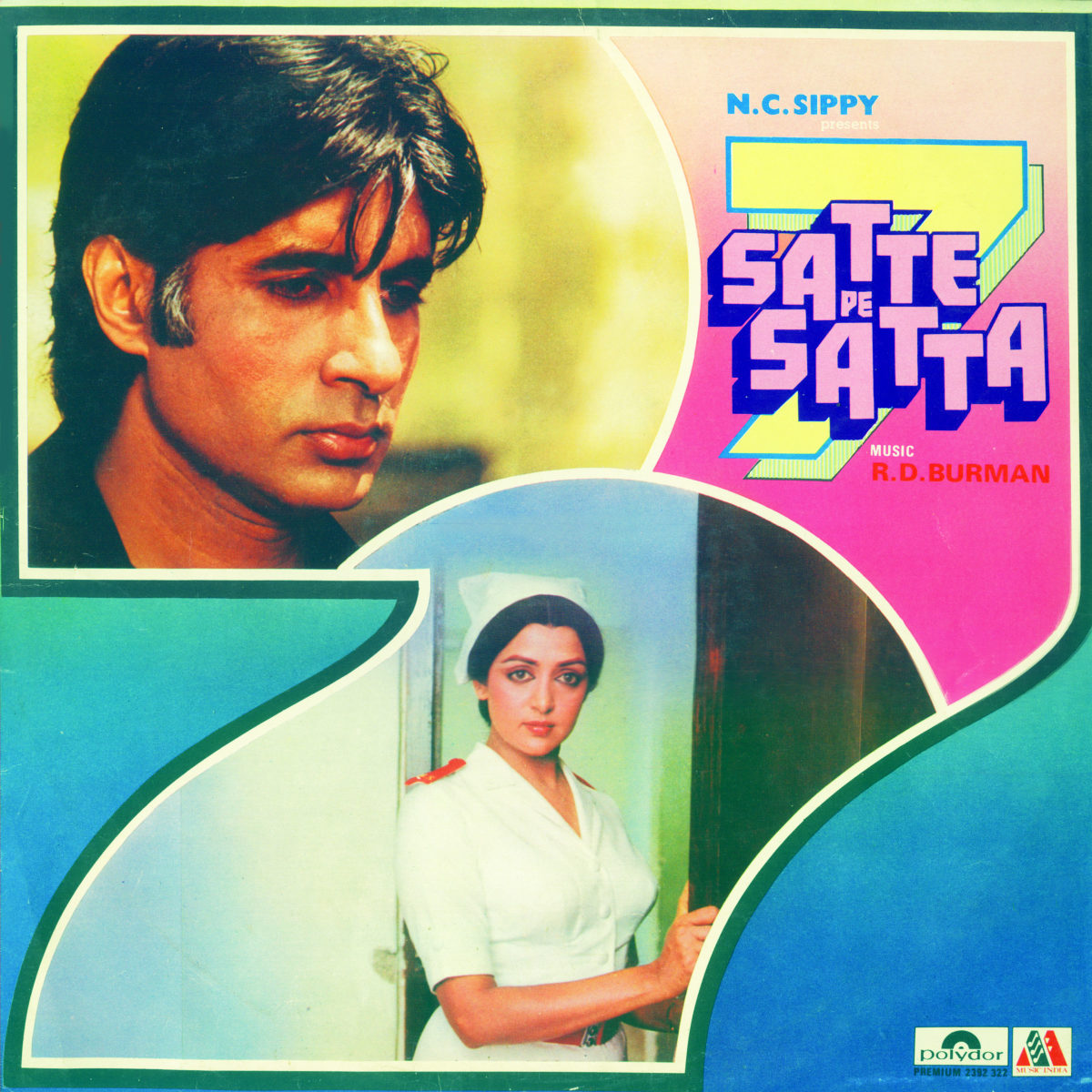Dilbar Mere Kab Tak Mujhe …

Film: Satte Pe Satta (1981)
Producer: Romu N. Sippy
Director: Raj N. Sippy
Lyrics: Gulshan Bawra
Singers: Kishore Kumar, Annette
–
Satte Pe Satta, a Bollywood-ised version of the musical Seven Brides for Seven Brothers boasted a fine assortment of songs from the RDB/Bawra team. Each song exuded sheer delight and merriment along with an infectious mix of melody and rhythm. From the title song featuring mouth percussion, to the situational jhukaa ke sar ko, to zi.ndagii mil ke bitaaye.nge inspired by the melody of the theme from The Longest Day to the beach song mausam mastaanaa, to the memorably rambunctious pyaar hame.n kis mo.D pe le aayaa and pariyo.n kaa melaa hai. As if indulging in percussive experiments like a kid pleased with his toys was not enough, RDB also snagged the services of a wide array of voices from the familiar Kishore Kumar, Asha Bhosle and Bhupinder, to familiars like Anand Kumar C and Dilraj Kaur, to assistants Swapan and Basu and even lyricist Bawra, besides lending his trademark vocals to four tracks.
The song for the fortnight, dilabar mere while ostensibly the most harmless of the lot boasts a catchy appealing melody set in a peppy jazz waltz embellished with the usual RDB kitchen sink of percussion. The lyrics have a lover telling the woman he loves that her reciprocating his affections is inevitable, that his love will fill her consciousness every time she thinks of him. In otherwise simple lyrics, Bawra manages a flourish with mai.n aag dil me.n lagaa duu.Ngaa vo ki pal me.n pighal jaaoge.
The first thing you hear on the song is a cowbell and then a preluding turn from the tumba and the bass guitar. A synthesizer plays out acid-toned chords as the drums join in. The string section joins in to exchange phrases with the synthesizer. If you listen carefully, you can hear chords played out on the guitar as well. Kishore begins vocalising with a melodic phrase. The trumpet carries the phrase forward, presents its response and closes the prelude.
The mukha.Daa begins in a minor key (Fm) and as Kishore goes aise hii ta.Dapaaoge, RDB tosses in an outlier chord (F#). This excursion is only momentary, however. The song switches to the key of F major as Kishore begins with ik din aayegaa, but we’re back to Fm with pyaar ho jaayegaa. All through this the bass guitar accompanies the chord changes on the guitar, the strings provide harmonic phrases, and the drums, tumba and shakers provide percussive support.
The first interlude is dominated by the string section. It opens with an exchange of phrases accompanied by the bass guitar, acoustic guitar and shaker. This is followed by a long melodic phrase played out by the string section accompanied by the bass guitar, acoustic guitar, shaker, tumba and the hi-hat. The section ends with a four note return played out on the electric guitar complemented by chords on the acoustic guitar.
The harmonic and percussive components of the a.ntaraa are just about the same as those in the mukha.Daa. While the opening note of the melody (F) provides no hints, the string harmonies accompanying the repetition of the first two lines indicates that the a.ntaraa begins in F major. The a.ntaraa returns to the minor key as Kishore sings ghir jaaoge aur bhii merii parachhaaiyo.n me.n. No surprises during the turnaround to the mukha.Daa.
The second interlude begins with a descending 1-5 progression (Fm/Eb/C#) pizzicato accompanied by the shaker and chords on the acoustic guitar. The strings play a rising swirling phrase whose peak is followed by a percussive slap fed with reverb and delayed echo whose decay is the only thing heard for about a measure. Then Annette’s ethereal voice begins humming a melody accompanied by the shaker, acoustic guitar and bass. A short fragment plays in response on the flute before a bass slide introduces a continuation played on the trumpet. The strings take up the baton and end the fragment, joined by the synthesizer in the last four measures.
The second a.ntaraa follows the pattern of the first one. The final rendition of the mukha.Daa ends with the melody of pal me.n pighal jaaoge being whistled out as the song fades to a close.
George Thomas
Panchammagic.Org

